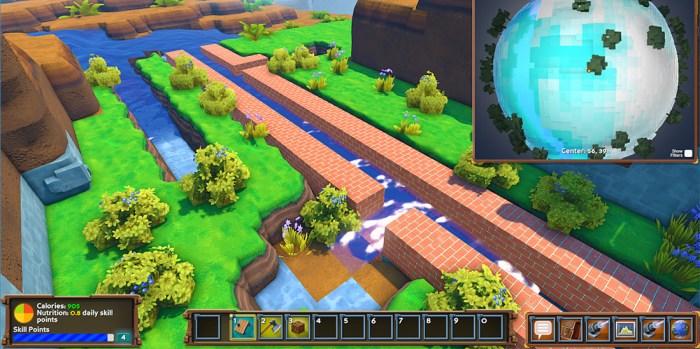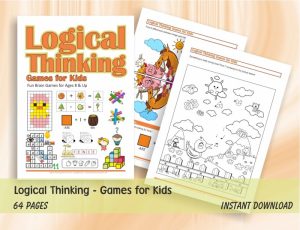
Strategy games have long been a popular form of entertainment, offering players the chance to test their skills in resource management, combat, and diplomacy. However, in recent years, a growing number of strategy games have begun to incorporate environmental themes, reflecting a broader societal shift towards sustainability and climate awareness.
These games offer a unique opportunity to engage players in complex environmental issues, challenging them to make decisions that impact the health and well-being of the planet. From managing scarce resources to mitigating the effects of climate change, these games provide a hands-on experience that can foster understanding and promote responsible behavior.
The Rise of Environmental Themes in Strategy Games

The integration of environmental themes into strategy games has witnessed a significant shift in recent years, reflecting a growing awareness of climate change and sustainability concerns within both the gaming industry and society at large. While early examples of environmental themes in strategy games can be traced back to the 1990s, the current trend is driven by a deeper understanding of the interconnectedness between human activities and the natural world.
The Historical Context of Environmental Themes in Strategy Games
Environmental themes have been present in strategy games for decades, though their prominence and complexity have evolved over time. Some early examples include:
- SimEarth (1990): This groundbreaking game allowed players to simulate the evolution of life on Earth, emphasizing the impact of environmental factors on the development of ecosystems.
- Civilization II (1996): Introduced pollution as a factor affecting city growth and resource production, raising awareness of the consequences of industrialization on the environment.
- Age of Empires II: The Age of Kings (1999): Featured resource management and the impact of deforestation on resource availability, emphasizing the importance of sustainable practices.
These early games, while not explicitly focused on environmental issues, introduced elements that foreshadowed the current trend. They laid the groundwork for more nuanced and complex explorations of environmental themes in later games.
Examples of Strategy Games Exploring Environmental Themes
Strategy games have traditionally focused on military conquest, resource management, and economic dominance. However, in recent years, a growing number of strategy games have begun to explore environmental themes, raising awareness about the challenges facing our planet and encouraging players to think about sustainable solutions. These games offer engaging and thought-provoking experiences, allowing players to engage with environmental issues in a virtual setting and learn about the consequences of their choices.
Examples of Strategy Games with Prominent Environmental Themes
Here are some notable examples of strategy games that incorporate environmental themes:
-
SimCity (Series)
SimCity games have always been about urban planning and managing a city’s growth, but they also provide opportunities to explore the impact of environmental choices. Players can build renewable energy sources, manage pollution levels, and address climate change concerns. The game’s environmental simulation allows players to see the consequences of their actions, such as rising sea levels or extreme weather events, fostering a sense of responsibility towards sustainable development. -
Civilization (Series)
The Civilization series, known for its expansive historical simulation, has increasingly incorporated environmental elements in recent installments. Players must manage resource consumption, deal with climate change impacts, and make decisions about environmental policies. The game’s emphasis on long-term consequences encourages players to consider the long-term sustainability of their empires, promoting a sense of stewardship for the planet. -
Tropico (Series)
In the Tropico series, players assume the role of a dictator in a fictional Caribbean island nation. The game challenges players to balance economic development with environmental concerns. Players must manage natural resources, address pollution issues, and respond to climate change threats. Tropico’s focus on sustainable development emphasizes the importance of striking a balance between economic growth and environmental protection. -
Anno 1800
Anno 1800, a city-building game set in the Industrial Revolution, offers players a glimpse into the environmental challenges of rapid industrialization. Players must manage resource consumption, pollution levels, and the impact of their factories on the environment. The game encourages players to consider the long-term consequences of industrial activities and adopt sustainable practices. -
Oxygen Not Included
Oxygen Not Included is a unique survival game where players must manage a colony of space explorers living in an underground base. Players must carefully manage resources, including oxygen, water, and food, while also dealing with environmental challenges such as asteroid impacts and volcanic eruptions. The game emphasizes the importance of resource management and the delicate balance of ecosystems. -
Satisfactory
Satisfactory is a first-person factory-building game set on an alien planet. Players must build factories, extract resources, and automate production chains. The game emphasizes the importance of efficient resource management and the impact of industrial activities on the environment. Players must carefully consider the environmental impact of their factories and ensure sustainable practices.
Gameplay Mechanics and Environmental Impact

Strategy games, by their very nature, are well-suited to exploring environmental themes. The core mechanics of resource management, strategic planning, and long-term consequences create a natural framework for simulating the complex interplay between human activities and the environment. By incorporating environmental factors into gameplay, developers can effectively engage players in a dialogue about sustainability, resource depletion, and the interconnectedness of ecosystems.
Resource Management and Depletion
Resource management is a fundamental aspect of many strategy games. By limiting resources and requiring players to carefully manage their consumption, developers can simulate the real-world challenges of resource scarcity and depletion.For example, in games like “Civilization,” players must manage resources like food, production, and energy. As the game progresses, these resources become increasingly scarce, forcing players to make difficult decisions about resource allocation and technological development.
This can raise awareness of the finite nature of Earth’s resources and the need for sustainable practices.
Terraforming and Ecosystem Balance
Terraforming mechanics allow players to manipulate the environment, transforming landscapes and adapting them to their needs. This can be used to illustrate the potential consequences of human intervention in natural ecosystems.In games like “SimCity,” players can choose to build sprawling cities, sprawling industrial zones, or focus on sustainable development. These choices have a direct impact on the environment, affecting pollution levels, wildlife populations, and resource availability.
By providing players with the power to alter the environment, these games encourage reflection on the ethical implications of human actions.
Ecological Balance and Feedback Loops
Strategy games can effectively demonstrate the complex feedback loops that exist within ecosystems. By introducing factors like pollution, deforestation, and climate change, developers can show how these factors impact the environment and, in turn, affect human societies.For example, in “Stardew Valley,” players must manage their farm, balancing agricultural practices with environmental concerns. Over-farming can lead to soil depletion, while neglecting forestry can result in increased erosion and reduced biodiversity.
These consequences create a tangible feedback loop that encourages players to adopt sustainable practices.
Emerging Technologies and Immersive Experiences
Emerging technologies like virtual reality (VR) and augmented reality (AR) have the potential to significantly enhance the immersive experience of environmental themes in strategy games. By providing players with a more visceral connection to the virtual world, these technologies can foster greater empathy and understanding of environmental issues.VR, for example, can transport players into a virtual forest, allowing them to experience the sights, sounds, and smells of a pristine environment.
This immersive experience can make players more aware of the value of biodiversity and the fragility of ecosystems.AR, on the other hand, can overlay information about environmental issues onto the real world. Players can use AR to visualize the impact of climate change on their local area, or to learn about the threats facing endangered species. This can create a more tangible connection between virtual and real-world environmental issues.
Educational and Societal Impact
Strategy games with environmental themes have the potential to be powerful tools for education and societal change. By engaging players in interactive simulations of environmental challenges, these games can foster a deeper understanding of complex ecological issues and inspire real-world action towards sustainability.
Educational Applications
These games can be valuable educational resources, offering engaging and interactive ways to learn about environmental issues.
- Simulating Environmental Processes: Games like “SimEarth” and “Civilization” allow players to experiment with different environmental policies and observe their consequences, providing a hands-on understanding of how human actions impact the environment.
- Raising Awareness of Environmental Issues: Games like “Eco” and “Fate of the World” raise awareness of pressing environmental issues like climate change, deforestation, and pollution, encouraging players to think critically about their role in these challenges.
- Promoting Sustainable Practices: Games like “Green City” and “FarmVille” encourage players to adopt sustainable practices in their virtual environments, which can translate into real-world behaviors.
Influencing Player Behavior
By immersing players in simulated environmental scenarios, these games can influence their attitudes and behaviors towards sustainability.
- Developing Environmental Literacy: These games provide a platform for players to develop a deeper understanding of environmental concepts, fostering a sense of environmental responsibility.
- Promoting Pro-Environmental Behaviors: By demonstrating the positive outcomes of sustainable choices, these games can motivate players to adopt more environmentally friendly practices in their daily lives.
- Encouraging Citizen Action: Games like “Climate Change: The Game” empower players to take action on climate change, providing tools and resources to advocate for change in their communities.
Fostering Dialogue and Collaboration
These games can facilitate dialogue and collaboration around environmental challenges, fostering a sense of collective responsibility.
- Creating Shared Experiences: By playing these games together, individuals can share their experiences and perspectives on environmental issues, building a sense of community and shared purpose.
- Encouraging Collaboration: Many of these games require players to work together to achieve common goals, promoting cooperation and collective problem-solving.
- Bridging the Gap Between Knowledge and Action: These games can bridge the gap between environmental knowledge and action, inspiring players to translate their understanding into real-world initiatives.
Future Trends and Innovations
The intersection of strategy games and environmental themes is ripe with potential for innovation, particularly with the rise of data-driven simulations and AI-powered opponents. These advancements are poised to make these games more sophisticated, realistic, and impactful in their depiction of environmental challenges.
Data-Driven Simulations and AI-Powered Opponents
Data-driven simulations and AI-powered opponents are transforming how strategy games model environmental challenges.
- Real-World Data Integration: Games can leverage real-world environmental data, such as climate models, resource availability, and pollution levels, to create more accurate and immersive simulations. This allows players to experience the complexities of environmental issues in a tangible way. For example, a game could incorporate real-time data on deforestation rates to dynamically update the game’s environment, creating a more authentic and challenging experience for players.
- AI-Powered Opponents: Advanced AI algorithms can be used to create intelligent opponents that adapt to player strategies and environmental changes. These AI opponents can simulate the complex interactions between human activities and the environment, providing a more realistic and engaging experience. For instance, an AI-controlled opponent could represent a government agency or a corporation, making decisions based on economic considerations and environmental impacts.
- Predictive Modeling: By integrating data and AI, games can incorporate predictive modeling to illustrate the long-term consequences of player actions. This allows players to see how their decisions impact the environment over time, fostering a greater understanding of cause and effect. For example, a game could simulate the effects of different energy policies on climate change, allowing players to see how their choices affect global temperatures and sea levels over decades.
As technology continues to advance, we can expect to see even more sophisticated and immersive strategy games that explore environmental themes. These games have the potential to become powerful tools for education, awareness-raising, and promoting positive change. By engaging players in a fun and challenging way, these games can help to inspire a new generation of environmental stewards.
FAQ Corner
What are some popular examples of strategy games with environmental themes?
Some popular examples include “SimEarth”, “Civilization V”, “Anno 1800”, “Frostpunk”, and “Oxygen Not Included”.
How do these games raise awareness about environmental issues?
These games often incorporate gameplay mechanics that simulate real-world environmental challenges, such as resource scarcity, pollution, and climate change. Players must make decisions that impact the environment and learn about the consequences of their choices.
Can these games actually influence player behavior?
While research on the direct impact of these games on player behavior is still ongoing, there is evidence that they can raise awareness and promote a greater understanding of environmental issues. This increased awareness can potentially lead to more environmentally conscious choices in real life.



